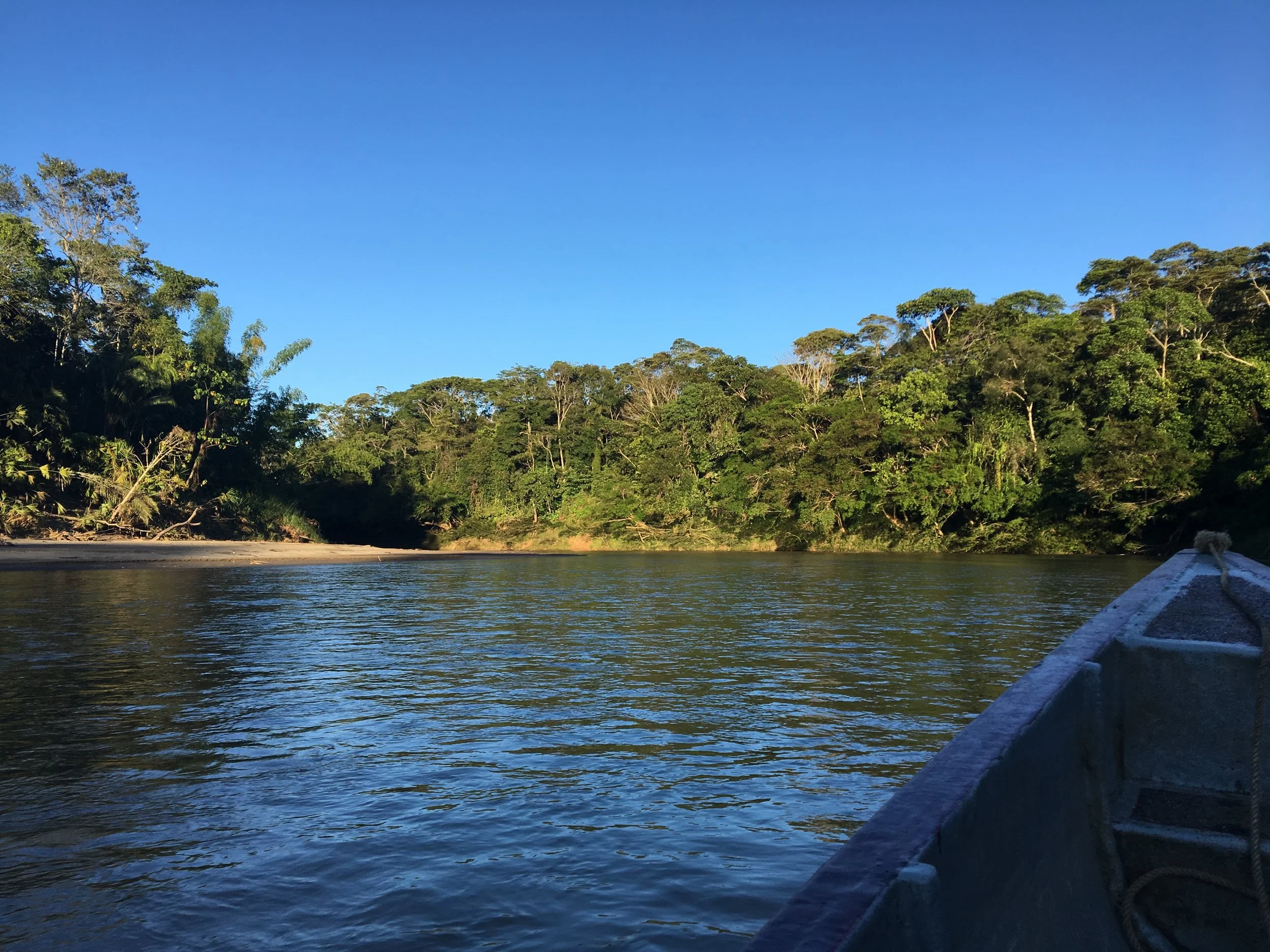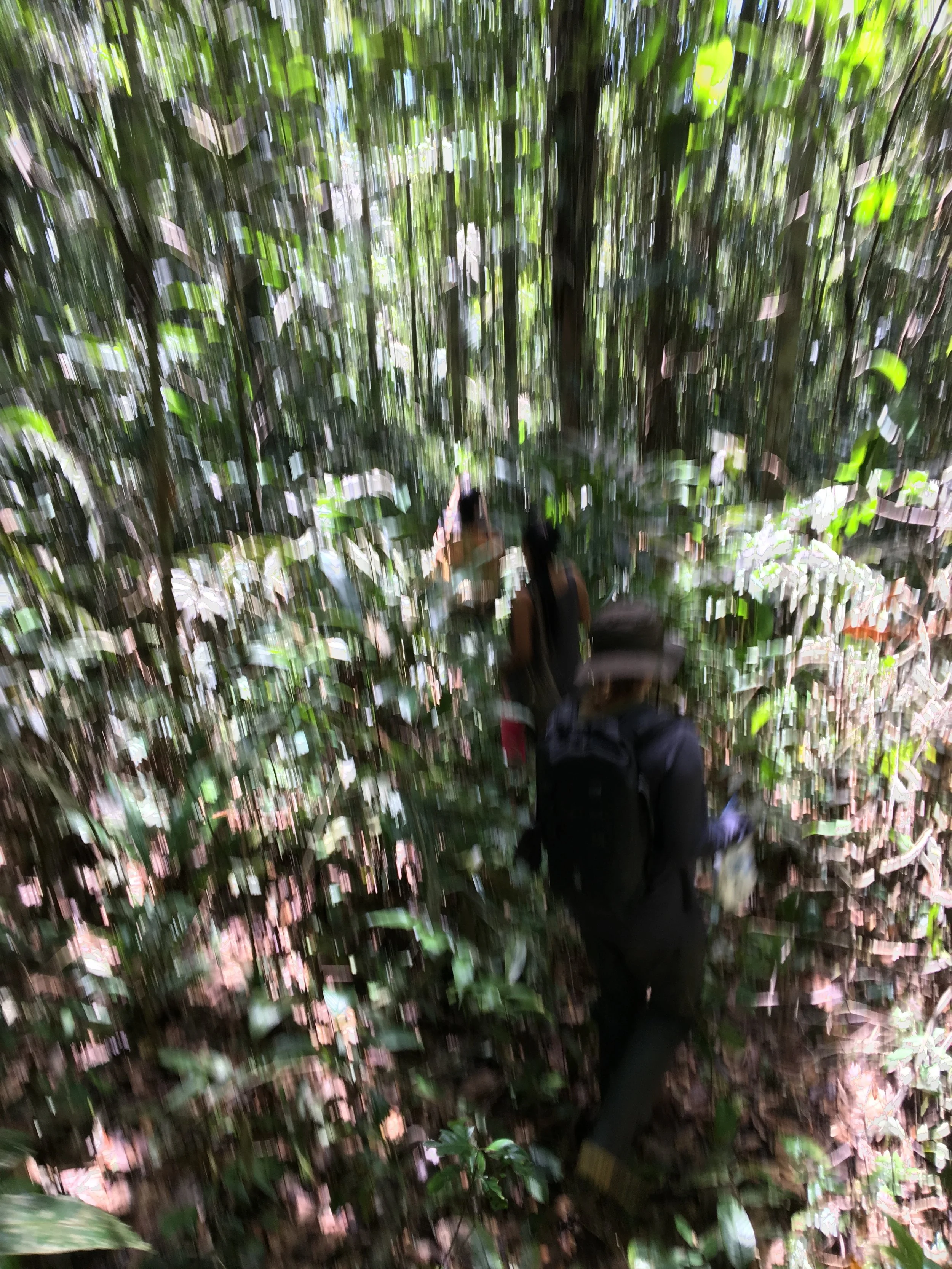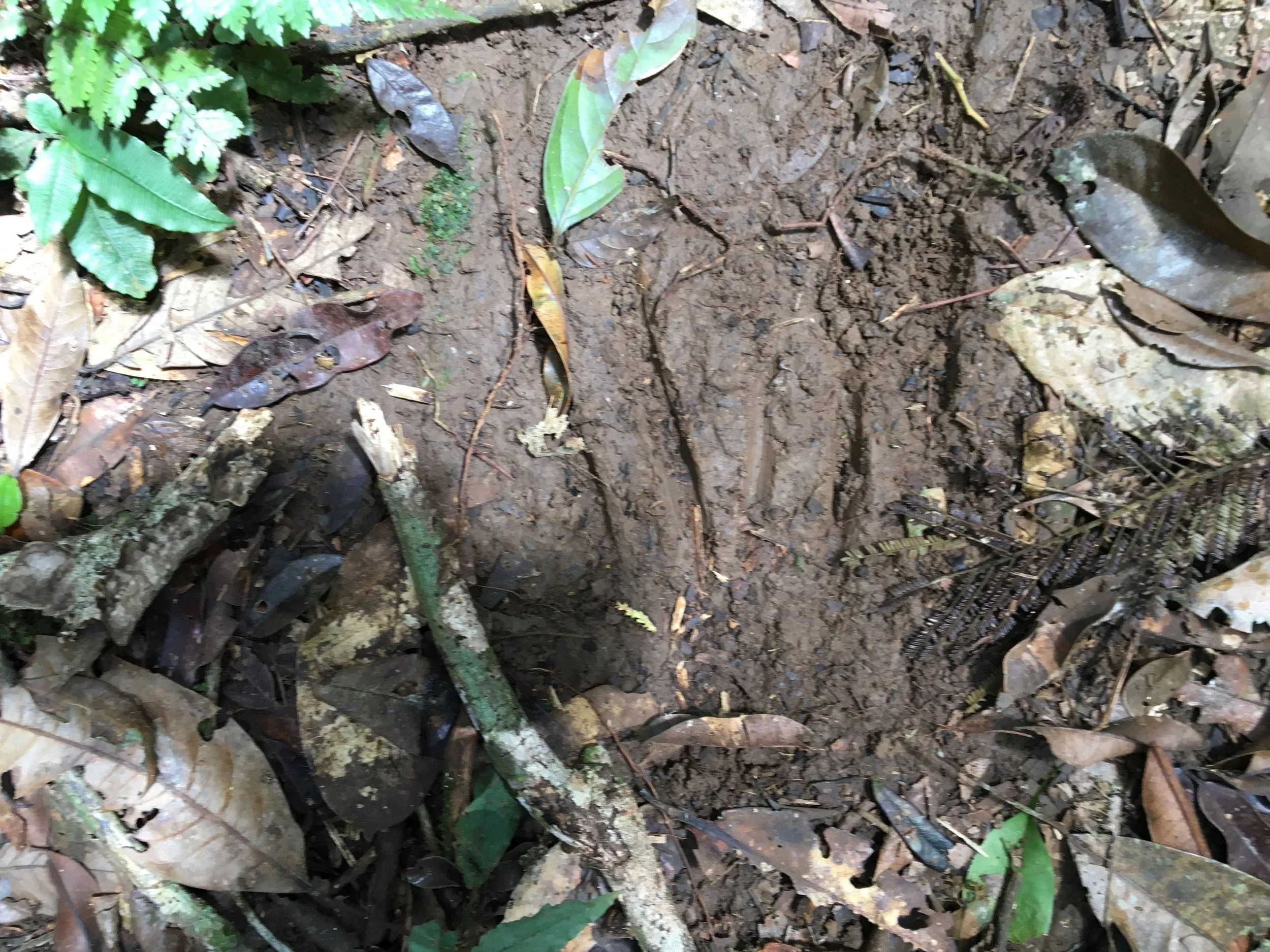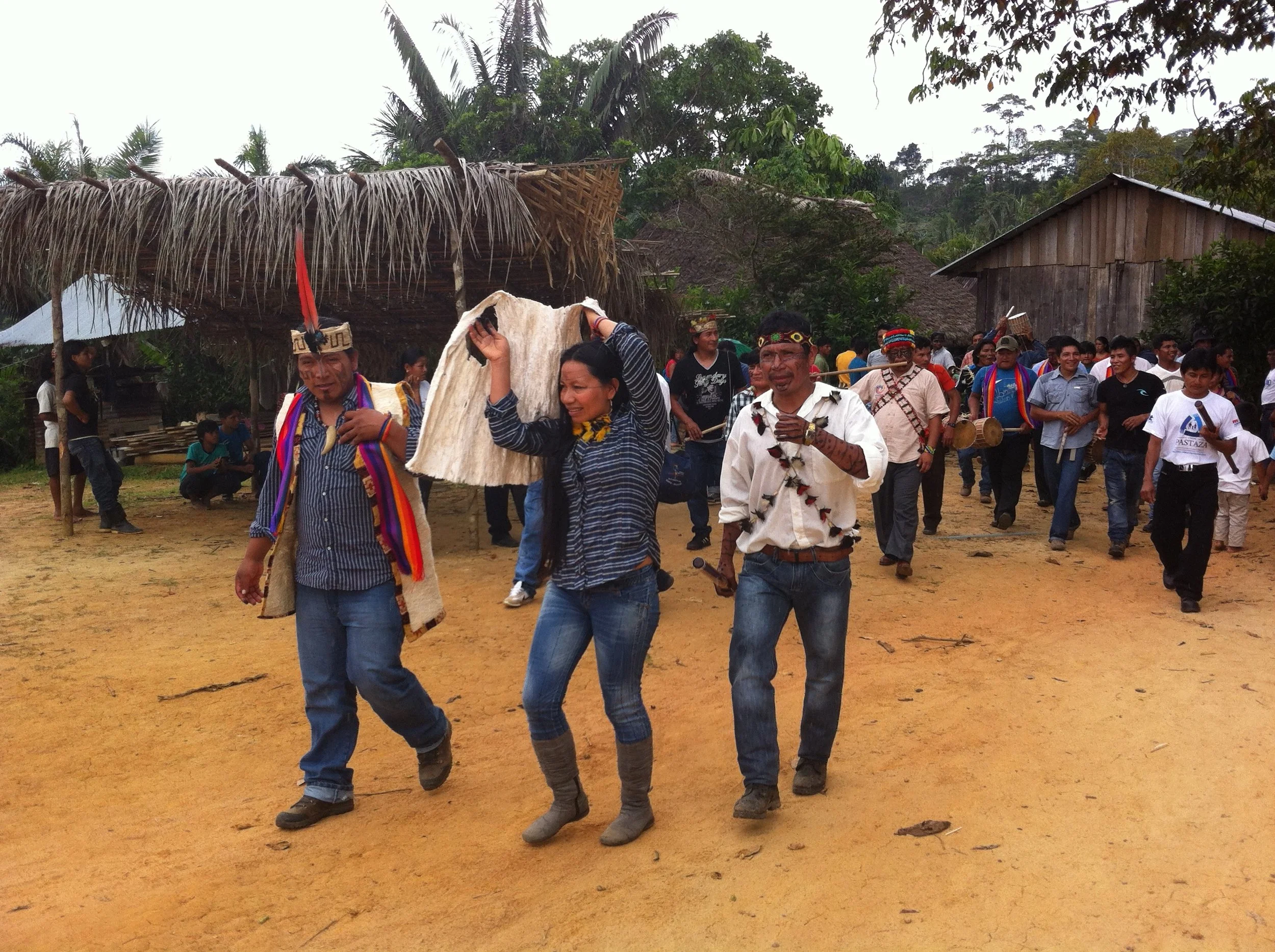Indigenous Peoples and The Trinity of Well-Living.
There is something incredibly self-defeating and ironic when it comes to understanding our ecosystems, the impact our human activities have on our natural environment as well as to designing the solutions to fix the problems we created. When I say “we” or “our”, I do not include all humans. I speak of the dominant societies - to which I belong - locked in a paradigm of infinite growth in a finite planet, of self-importance and personal benefit. Self-defeating because we keep on applying the same old mindset to systems design that create inadequate policies and solutions (see Albert Einstein’s definition of insanity). Ironic because while we witness and participate in the most disrupting and devastating planetary transformation, we keep on ignoring the people – perhaps the only ones who can help us understand and address all of these issues while co-creating a self-sustaining world for many generations after us.
I come from the premises that for as long as we divide the world and everything that makes it and us into parts, our solutions will only be temporary until they create new problems and need new solutions regardless of the economic and social flavor of the time. We’ll keep seeing the natural world as a sum of extractable commodities without taking into account its role in maintaining balance and sustaining life. Let’s put things in perspective:
The air we breathe comes from two places: the ocean (70%) and rainforests (28%). They are also the largest carbon dioxide sequester. They are the most important climate regulator. On a global scale, there is not one natural cycle that is complete without healthy forests and oceans.
And yet we’re losing to human-led deforestation an area equivalent of three states of Hawaii every year. Deforestation are essentially due to extractive (logging, mining and fossil fuels) and agricultural (palm oil, soy, corn, cattle) activities. These forests are home to 80% of the world’s terrestrial biodiversity, from plants to animals to microorganisms.
And yet we’re affecting our oceans’ capacity to regenerate: 90% of global fisheries are in the red, the surface area of dead zones (where the oxygen is too low to sustain life) has quadrupled since 1950, plastic pollution has become such that most of the fish we eat contains microplastic, while the warming of our oceans is disrupting the oxygen-production function of phytoplankton. Adding to this grim picture, we may also be losing phytoplankton and other oxygen producing organisms.
It is difficult to illustrate how critical biodiversity is to sustaining these vital ecosystems. Western science shows that the greater the diversity, the more resilient ecosystems are; simply because we find more organisms performing overlapping functions, thus the need not to focus on single species but on the preservation of complex set of interactions amongst species, human included. The most life-giving places on earth happen to be the most biodiverse.
From these few facts, we realize 1) the interconnectedness of all living organisms and systems, 2) our environmental crisis goes well beyond CO2 emissions and 3) we have lost our ability to see us, humans, as nested in a giant ecosystem made of a multitude of vital interconnected ecosystems we call Earth, rather than being a part disconnected from it.
Is it therefore surprising that the most biodiverse and thriving land and water ecosystems are found where Indigenous Peoples have rights over them? Sure, one could argue that if given the economic development opportunity, they would gladly trade the land they have depended on for western values. Well, despite all the attempts to disrupt their ways of life – from missionaries altering their belief systems to governments forcing them to adopt western practices, they are still very much holding on to their ancestral lands. Only forced removal, disease outbreaks and armed conflicts have driven them away.
So what makes Indigenous peoples the most apt stewards of our remaining natural wonders?
Indigenous ways of life are deeply anchored in what I call the Trinity of Well-Living: traditional knowledge, which guides their everyday activities, decision process and their relationships with everything and everyone; cultural identity, which allows them to function as a unified group around values, principles and a common language; and nature, which provides life and a subsistence economy. It is important to see these three cornerstones as intrinsic, dynamic and indivisible. A change in one of these dimensions will affect the other ones. Traditional knowledge has been built upon thousands of years of interaction between people and their environment. Creation stories and myths should not be viewed as “folks tales” but as cautionary guidelines on how to move through the world safely (most Indigenous people of South America I know ends a conversation not with “goodbye” (adios) – a contraction of “God Be With You” but with “be careful” (cuidate) as a reminder that anything can happen and one should be prepared to face the unexpected). Traditional knowledge also directs an individual or a group to pay attention, to listen and to situate oneself into the world. Knowing what and where to hunt, fish or harvest plants might well be of lesser importance than the when and how. It is common for a tribal group to stop visiting a hunting or fishing ground for years to let it regenerate, or to manage another to favor the growth of certain plants that attract wildlife.
It is important to distinguish cultural identity from culture, as the latter is usually a product of norms and defined by outside groups, and the former requires us to interact with a person or a group to understand how they self-identify. We (the dominant society) usually approach an Indigenous culture with the expectation they behave according to a set of pre-defined values, while each group might present a very different view of their own identity, even compared to their closest neighbors. For instance, we see Indigenous groups of the Amazon Rainforest as hunter-gatherers, horticulturists or/and farmers, we group them according to their family structure, linguistic, location and some of their customs, but these characteristics tell us little about them. Worst, they have misled us too often to either romanticize them or characterize them as backward. Their cosmovision or worldview, beliefs system, art forms or even the importance they place on certain plants tell us more about them. They all share the feeling their whole identity is based on a living forest and every single group feels a responsibility to maintain a healthy and thriving forest for the next generations. This worldview is shared by all tribal groups I am familiar with, from the Tlingit of the Pacific Norwest to the Achuar of the Ecuadorian Amazon. Traditional knowledge and cultural identity in this context tells us more about their attachment and the role Indigenous have been playing in maintaining healthy ecosystems.
From left to right: Amazonian honey bees; yes, this is a trail; a traditional food garden (chacra) with corn; a jaguar was here a couple of hours earlier.
Take maize and its importance in Indigenous ways of life. Corn is not just a staple; it has sustained spiritually, physically and economically Indigenous peoples of the Americas for thousands of years. It was never grown as a monocrop but associated with beans and squash, which form a symbiotic relationship. Certain strains of corn are planted and harvested in specific locations at a specific time of the year, usually coinciding with a natural event such as birds migration announcing the first rain. Scientists have been debating whether the hybridization and subsequent introgression of teosinte into maize was accidental - a “naturally occurring process of evolution” or Indigenous peoples of Central America played any role in it. If one would pay attention to Indigenous’ traditional knowledge – both past and present - around the different techniques they have used to grow maize, the response was and still is obvious. We have now evidence Central American’s myths of creation involving maize are rooted in reality. Killing a shark in Tahitian culture is taboo outside religious rituals such as the coming of age for boys. Tahitians share the same hunting grounds, and perhaps observing the apex led their ancestors to form a symbiotic relationship with the most feared fish in the world, both as a pilot for migratory purposes (they believe their ancestors arrived on the island guided by Atua ma’o, the shark god) and as a teacher to hunt fish in the reefs. Even more striking is the relationships tribal people of the Amazon Rainforest have formed with plants. What were the odds of pairing Banisteriopsis caapi with Psychotria viridis (commonly known as Ayahuasca and Chacruna) out of 40,000 plants (the number of plants scientifically recorded in the rainforest)? 1 in 1,599,960. Also still debated amongst scientists is the effect of Indigenous activities in the Amazon. In locations known to have been inhabited or still inhabited today, we find a higher abundance and richness of plants that are used by Indigenous people that led scientists to finally accept Indigenous claims that they have been attending to the forest for millennia. Their pharmacopeia is such that of the 3,000 plants identified by the US National Cancer Institute as active against cancer cells, 70% come from rainforests. Scientists have not ventured into these “inhospitable” environments to “discover” them, they had to interact with local healers. Whether on land or at sea, Indigenous Peoples have been the first ones to record change in weather patterns. Since the year 2000, Earth’s axis has shifted by about seven inches a year – something which Nasa scientists have described as a “massive swing”. Inuit elders have also noticed that shift and reported to Nasa along with the numerous change in weather patterns they have observed.
On my last journey into the Amazon rainforest, my Kichwa friend, Miguel and his family unwillingly reminded me every day of the importance of the Trinity of Well-Living. He walked me to a fallen palm tree and started shopping the base of the trunk with an ax to dislodge beetle larvae. This is a treat down here. These protein packed larvae are so tasty I could easily get addicted. Not more than three per person, the rest must live on. While he was still busy breaking down the trunk of that tree, I noticed a myriad of little black flies on me. I am mistaken, these are honey bees. They don’t sting and make, I was told an incredible honey they use for medicinal purpose. Miguel laughed as we both realized they were only attracted to men’s sweat. A few hours later we went back to his camp. It was impossible to see any track, the trail was literally invisible. We stopped by the family chacra, the traditional vegetable garden to pick up some corn and manioc. Soon, Renan, his older son would come back with some fish. At dinner, they seat and share what they have observed during the day. They can tell which animal is in the area, how many fish are in the river, and if any must be preserved. Everything that needs to be address is addressed, nothing goes to waste, everything as a value, knowledge sharing is constant. When I shared with them the changes I was experiencing, both physically and mentally, Renan exclaimed: “Marc, what you’re experiencing is the birth of the world.”
From left to right: (1) Sarayaku, Ecuador: Indigenous leaders from different nationalities gathered on August 12, 2012 to celebrate the legal victory of the Sarayaku people against the Ecuadorian state. The Inter-American Court ruled against the Ecuadorian state for having violated the Sarayaku’s right to life and personal integrity, as well as their right to prior open and informed consultation. (2) Indian Garo Treble Couple with there Traditional Dress (credit Vishma Thapa). Uncontacted for 2400 years, this matrilineal society is unique in that the youngest daughter will inherit her mother’s property (3) Some Yanomami have remained uncontacted. Illegal mining and logging, ranchers, diseases threaten both contacted and uncontacted tribes (© Fiona Watson/Survival) (4) Ba’Aka people of Cameroon have been struggling to get their land rights recognized.
Looking at different communities belonging to the same nationality, I couldn’t help noticing that the ones whose traditional knowledge was still alive and deeply rooted into their daily lives fare much better than the ones who are less connected to it, whether by choice or because their life was forever altered by external circumstances. They are psychologically and physically more resilient. Their territory is more diverse and vibrant. Traditional knowledge and their natural environment has shaped their cultural identity, which in turn keeps them connected to their ancestral land and allow them to play an active role in maintaining a regenerative forest.
From the Amazon Rainforest to the African Savanna and from the Australian Bush to the Mongolian steps, where Indigenous Peoples are in charge, nature flourishes. Again, these are not random processes but centuries-long accumulated knowledge passed on from one generation to another through storytelling and practical teaching. They have united with old foes around a common cause, protecting their sacred rivers and ancestral land. As they have become more exposed to our civilization, they have also recognized the need to find allies and integrate into their tool-kits some of our technologies (cellular phones, solar panels and GPS Mapping system). As importantly, they are eager to help us reconnect with our lost-self. Our homogeneous formatted approach is in dire need of a different mindset and Indigenous Peoples might help us transition towards a more holistic worldview and lifestyle … if we give each other the opportunity.









